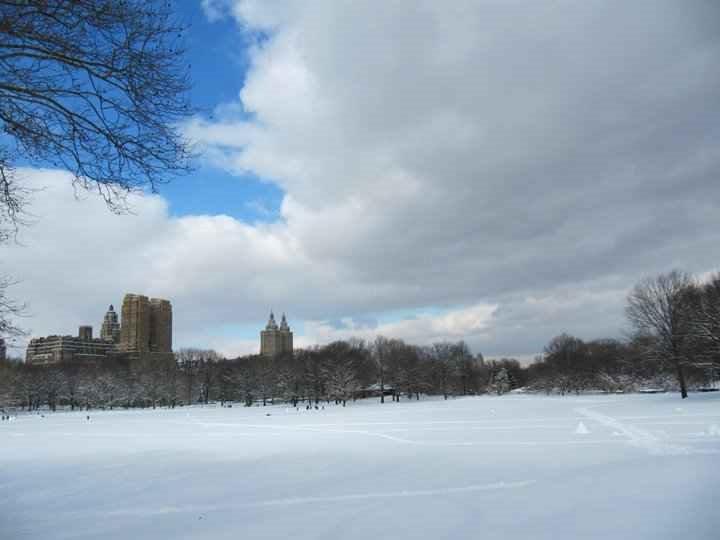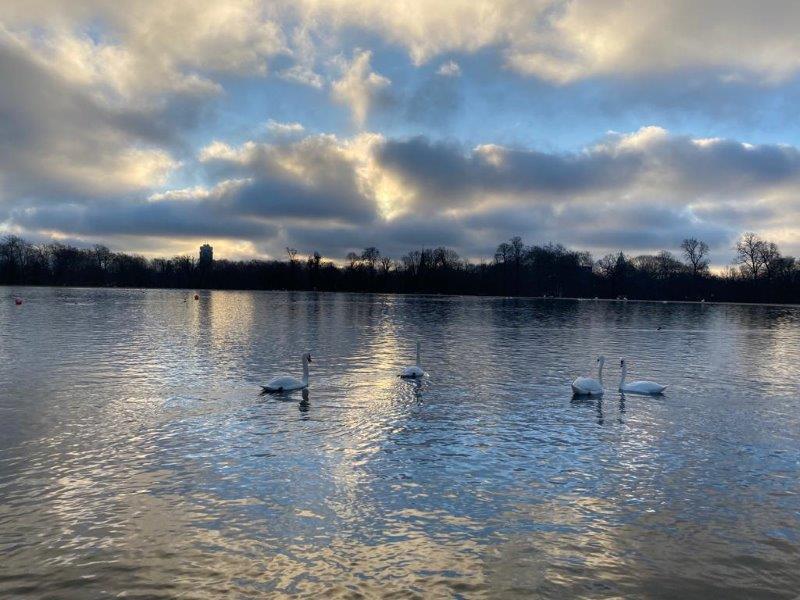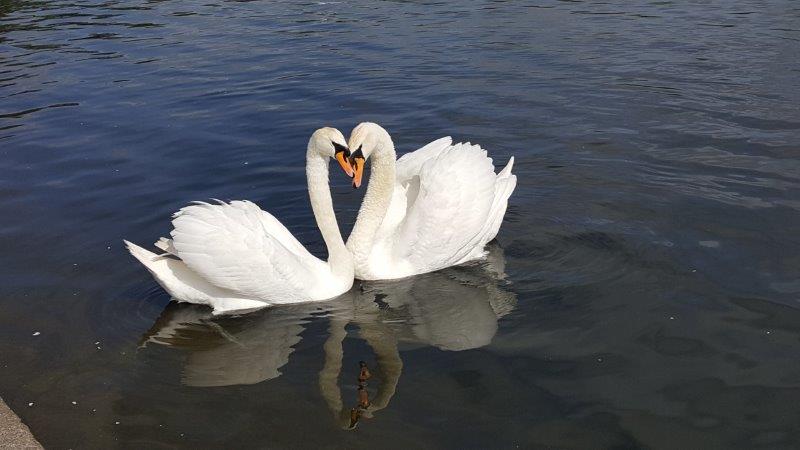As a New Yorker, I am often pulled into a debate about New York vs anything, such as New York vs. London. One of my favorite debates is Central Park vs Hyde Park, especially with friends from London. The discussion focuses as much on the similarities between Central Park and Hyde Park as much as it does differences between them, but a common thread is that they are two iconic urban parks providing an oasis in the middle of two of the best known cities in the world.
Central Park is located in the heart of Manhattan and covers an area of 843 acres, making it one of the largest urban parks in the world. It was designed by Frederick Law Olmsted and Calvert Vaux in the mid-19th century and features numerous lakes, gardens, recreational facilities and even a zoo and a sanctuary. In contrast, Hyde Park, situated in the center of London over 350 acres, was established in the 16th century by Henry VIII and has since been expanded and improved upon over the years.

A fascinating fact I learned is that Hyde Park is situated in a city that is actually considered a forest! London meets the criteria of being a forest as 21% of it is trees, while the UN defines a forest as anyplace that is 20% trees. In contrast, New York is a concrete jungle, with Central Park playing the role of a magnificent backyard for most New Yorkers that do not have any outdoor space in their apartments.
Table of Contents
Location and Size
Central Park in New York City and Hyde Park in London are two parks that are impressive in their own right, but when it comes to size, Central Park is the clear winner. Covering 843 acres, Central Park is the fifth-largest park in New York City and gets an estimated 38 million visitors annually, making it the most visited urban park in the United States. That being said, it is always possible to find place, either crowded or solitary based on what you are looking for, in Central Park. On the other hand, Hyde Park is 350 acres, which is the largest park in central London but not quite as large as Central Park.

Another notable difference between the two parks is their shape. Central Park is rectangular in shape, stretching 2.5 miles from north to south and 0.5 miles from east to west in Manhattan, while Hyde Park is more irregularly shaped, with a length of 1.5 miles and a width of 0.5 miles.
Moving on to the similarity between them, both parks are located in the heart of their respective cities, making them easily accessible for both locals and tourists. Central Park lies between the Upper West and Upper East Sides of Manhattan, while Hyde Park is located in the City of Westminster in London. What makes them even more popular is that both parks are easily accessible by public transportation.
History and Establishment
Central Park and Hyde Park have very different stories behind how they came into being, though both have a rich history and are important landmarks in their respective cities.
Central Park, established in 1858, was created as a response to the growing need for open space in the rapidly developing city of New York. Designed by Frederick Law Olmsted and Calvert Vaux, the park was built on 843 acres of what used to mostly swampland and rocky terrain at the time, and as we learnt in the last few decades was at the expense of Seneca Village, which was an established community on the Upper West Side of Manhattan. The construction of the park was a massive undertaking, and it took over 20 years to complete.


Hyde Park, on the other hand, has a much longer and involved history. The park was originally acquired by King Henry VIII in 1536 as a hunting ground, and remained a private hunting ground until 1637 when it was opened to the public. Designed by by Charles Bridgeman in the early 18th century, it was then redesigned by Lancelot “Capability” Brown in the mid-18th century. Covering 350 acres, it is the largest Royal Park in central London.


Central Park and Hyde Park provide open space for city dwellers and are a very integral part of the cultural and social fabric of New York and London respectively.
Design and Landscape
Central Park and Hyde Park are both iconic public parks that attract millions of visitors every year, and their design and landscape make them both unique and very accessible by visitors.
Central Park’s landscape of the park is entirely man made, with winding paths by design. Most of the park is landscaped and organized, and the designers created The Ramble in the middle of it all to showcase greenery in its natural element. The pathways were all originally designed for different forms of traffic, including for horses, and the only straight path in the park is The Mall.


Hyde Park, on the other hand, is a royal park located in London spanning over 350 acres and featuring several gardens, lakes, and monuments. Originally created in the 16th century, it has undergone several changes over the years, evolving into a mix of formal and informal elements. It features several gardens, including the Rose Garden and the Italian Garden, and is also home to several statues and monuments, including the Diana Fountain and the Wellington Arch.


While both parks have their unique features, Central Park is better known for its naturalistic elements, while Hyde Park is known for its formal gardens and monuments.
Attractions and Activities
Central Park and Hyde Park both go beyond just parks to offer a ton of attractions and activities for everyone.
Starting with Central Park, it has several iconic landmarks, including the Bethesda Fountain, the Central Park Zoo, the Jacqueline Kennedy Onassis Reservoir, Bow Bridge, and a lot of activities such as hiking, biking, birdwatching, ice skating in the winter, roller skating in the summer, and the list goes on. The New York Marathon ends in Central Park every year, which is a great time to visit. Central Park is also a delight in the summer with the free New York Philharmonic and Shakespeare in the Park performances, free concerts at SummerStage, and the annual Global Citizen Festival that is held at the Great Lawn.

Hyde Park, on the other hand, is well known for its rich history and cultural attractions, such as the Franklin D. Roosevelt Presidential Library and Museum which is a must-visit for history buffs, while the Vanderbilt Mansion National Historic Site offers a glimpse into the opulent lifestyle of the Gilded Age, and the Artists’ Collective of Hyde Park showcases the work of local artists. For outdoor activities, Hyde Park offers options for walking along the Hudson River at the Hyde Park Landing, hiking trails at Staatsburgh State Historic Site, and Hyde Park Marina, which offers boating and fishing opportunities. While Hyde Park does not have a zoo, I love experiencing their swans, which are such a distinctive feature of a visit to it.

As such, Central Park and Hyde Park are a draw in terms of their attractions and activities for visitors to enjoy!
Closing Thoughts on Central Park vs Hyde Park
Comparing Central Park and Hyde Park is not an apples to apples comparison all the way through, other than the fact that they are both major landmarks and influences in their respective cities. While Central Park is larger and has more attractions, such as its own zoo and several lakes, Hyde Park is more natural and peaceful, with beautiful gardens and fountains, and the swans which I can never get enough of when I visit.
Both parks offer options for being active, such as biking, running, or walking, and for leisure activities such as picnicking or enjoying the parks in different seasons. In addition, both parks are easy to access using public transportation, which is a big plus, and offer stunning views of the surrounding city.
Rather than comparing one to the other, I would say that Central Park is a must visit when you are in New York, and Hyde Park is a must visit across the figurative pond when you are in London.



